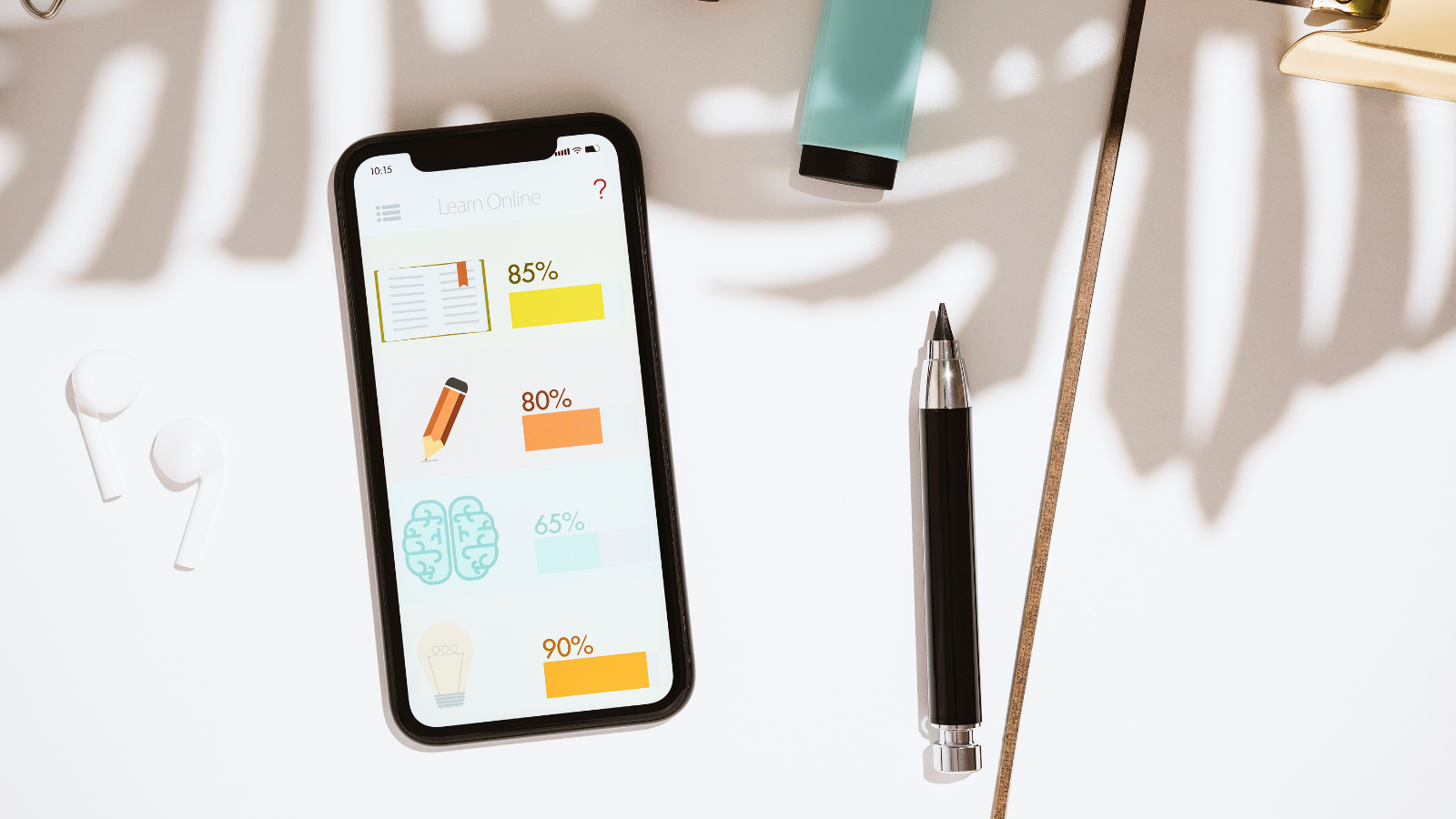Covid-19 crisis brought a lot of changes in our daily lives. Behind their screens, everyone tries to focus, lost in a throng of remote meetings, or classes. As a massive wave, digital learning surges into students and teachers courses, becoming the only way to pursue schooling in Higher Education.
Through this tough transition, we observed that a lot of EdTech solutions were already there, and just needed to be handled. Among them, Mobile learning, which is a growing market supposed to progress to a compound annual growth rate of 22% by 2025, according to TechNavio Survey
Mobile Learning, also called M-Learning, is a new educational tool based on experience and flexibility, which can be used on any digital devices, mostly on smartphones. It represents the perfect way to meet new educational technologies, needs from the new generations and significant growth of learning retention.
The expansion of M-Learning is directly related to technology’s evolution, while 70% of the internet traffic comes from mobile devices in 2020, according to a survey of BlueCorona.
How does it work ?
Mobile learning has some similarity with e-learning, but it can bring a lot more involvement. It’s not only about being able to reach your digital form classes documents, or to follow your class from home. It’s also a mix between AI, video learning, immersive technology, and gamification. Our robots love to highlight how all those latest technologies can impact higher education in a positive way. We talked about some of these subjects in our french blog, sorry if you’re not a frog eater, you can still follow us on our social media to reach more english content about Ed Tech and universities lives.
What about learning Any Time, Any Where, Any Device (ATAWAD) ?
With mobile learning, you can follow your courses from your phone, your laptop, or any other device. It creates flexibility, and allows a personalised way to achieve your learning process, in giving you the choice of the better method for you to learn. Study wherever you are, whenever you want is the promise of this technology.
This technolgy creates an access to a huge online platform where students can find very different resources, and improve their knowledge as they attempt to, with personalised contents. It’s also about personalised data, which is driving the users experience and helps them to focus on their goals. They can identify their point of improvements more easily with Artificial Intelligence. The algorithms analyse their learning preferences, content patterns, and give them quick feedback on exercises or interactive study sessions. The more they get trained, the more accurate their Algorithms will be.
The french company Teach on Mars, propose a tailored made mobile learning app you can customise, where users achieve in a personalised way their training programs, reach personalised contents, communicate and interact with their learning environment and create their own mobile learning resources with an authoring tool :
What about creating engagement and interaction ?
According to the neuroscientist and president of the french Scientist Council of National Education, Stanislas Dehanea, the main pillars of learning are attentiveness, involvement, feedback during the class and strengthening the studying with regular training.
With these connected areas, your phone, laptop, tablet, which are often a distraction when you’re in class, become your main tool to learn. Mobile devices used in the classroom, like Kahoot or Wooclap, are based on games mechanisms. Challenges, competitions, achievements, immersive simulation, rewards, game designs are all about creating engagement.
Students become the main character and create a simulation in their learning which improves their retention rate to 90% against 75% with usual learning methods, according to Edgar Dale’s learning pyramid.
The game design and the storytelling improve the attention with an attractive simulation and a challenging goal, also made to give a quick feedback on users experience which allows learners to focus and train on their needs.
In classrooms, teachers often use quizzes, or team challenges, creating interactivity and a ludic way to use the students skills and create involvement. Exemple with Wooclap :
Mobile Learning is a good answer to a big part of the needs of students, who are used to digital content and to reach information online, with their smartphones, whenever and wherever they want. It’s also improving their learning because of the involvement and interaction it can bring.
If we have to be carefull, be sure that students can access these technology devices, and to watch out for the numeric fraction it could generate, smartphones are now taking a main role in our everyday life, and Higher Education has everything to gain in implementing it!




